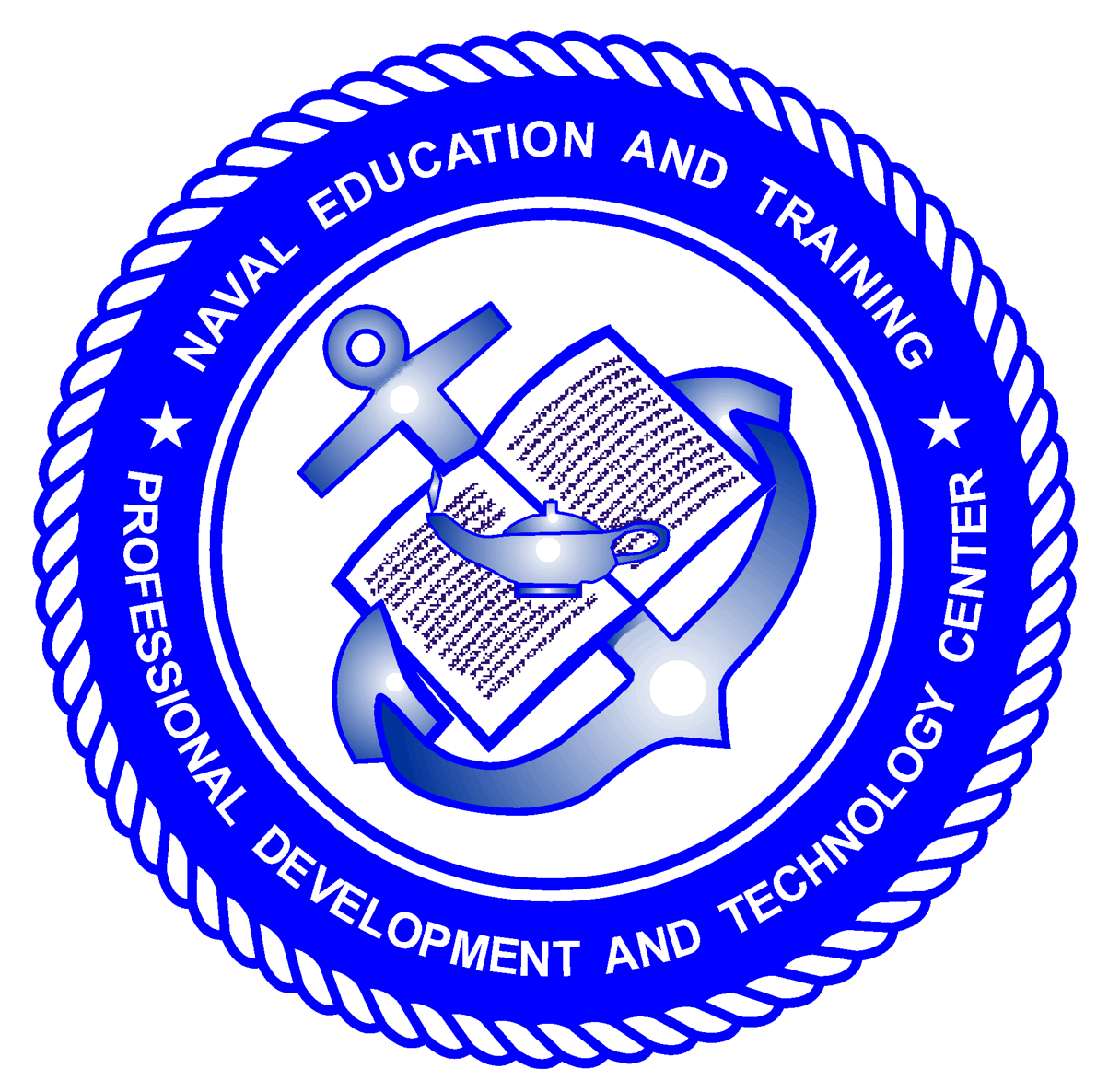 NONRESIDENTTRAININGCOURSESEPTEMBER 1998Navy Electricity andElectronics Training SeriesModule 4Introduction to ElectricalConductors, Wiring Techniques, andSchematic ReadingNAVEDTRA 14176DISTRIBUTION STATEMENT A: Approved for public release; distribution is unlimited.Although the words he, him, andhis are used sparingly in this course toenhancecommunication,theyarenotintended to be gender driven or to affront ordiscriminate against anyone.DISTRIBUTION STATEMENT A: Approved for public release; distribution is unlimited.PREFACE By enrolling in this self-study course, you have demonstrated a desire to improve yourself and the Navy. Remember, however, this self-study course is only one part of the total Navy training program. Practical experience, schools, selected reading, and your desire to succeed are also necessary to successfully round out a fully meaningful training program. COURSE OVERVIEW: To introduce the student to the subject of Electrical Conductors, Wiring Techniques, and Schematic Reading who needs such a background in accomplishing daily work and/or in preparing for further study. THE COURSE: This self-study course is organized into subject matter areas, each containing learning objectives to help you determine what you should learn along with text and illustrations to help you understand the information. The subject matter reflects day-to-day requirements and experiences of personnel in the rating or skill area.
NONRESIDENTTRAININGCOURSESEPTEMBER 1998Navy Electricity andElectronics Training SeriesModule 4Introduction to ElectricalConductors, Wiring Techniques, andSchematic ReadingNAVEDTRA 14176DISTRIBUTION STATEMENT A: Approved for public release; distribution is unlimited.Although the words he, him, andhis are used sparingly in this course toenhancecommunication,theyarenotintended to be gender driven or to affront ordiscriminate against anyone.DISTRIBUTION STATEMENT A: Approved for public release; distribution is unlimited.PREFACE By enrolling in this self-study course, you have demonstrated a desire to improve yourself and the Navy. Remember, however, this self-study course is only one part of the total Navy training program. Practical experience, schools, selected reading, and your desire to succeed are also necessary to successfully round out a fully meaningful training program. COURSE OVERVIEW: To introduce the student to the subject of Electrical Conductors, Wiring Techniques, and Schematic Reading who needs such a background in accomplishing daily work and/or in preparing for further study. THE COURSE: This self-study course is organized into subject matter areas, each containing learning objectives to help you determine what you should learn along with text and illustrations to help you understand the information. The subject matter reflects day-to-day requirements and experiences of personnel in the rating or skill area.
It also reflects guidance provided by Enlisted Community Managers (ECMs) and other senior personnel, technical references, instructions, etc., and either the occupational or naval standards, which are listed in the Manual of Navy Enlisted Manpower Personnel Classificationsand Occupational Standards, NAVPERS 18068. THE QUESTIONS: The questions that appear in this course are designed to help you understand the material in the text. VALUE: In completing this course, you will improve your military and professional knowledge. Importantly, it can also help you study for the Navy-wide advancement in rate examination. If you are studying and discover a reference in the text to another publication for further information, look it up. 1998 Edition Prepared byAECS Steve Heartsfield Published by NAVAL EDUCATION AND TRAINING PROFESSIONAL DEVELOPMENT AND TECHNOLOGY CENTER NAVSUP Logistics Tracking Number0504-LP-026-8290 i Sailors Creed I am a United States Sailor.
I will support and defend the Constitution of the United States of America and I will obey the orders of those appointed over me. I represent the fighting spirit of the Navy and those who have gone before me to defend freedom and democracy around the world. I proudly serve my countrys Navy combat team with honor, courage and commitment. I am committed to excellence and the fair treatment of all. ii TABLE OF CONTENTS
CHAPTER
PAGE
Electrical Conductors ............................................................................................... 2-1 Schematic Reading ................................................................................................... 3-1
APPENDIX I. 3-1
APPENDIX I.
Glossary.................................................................................................................. AI-1 II. Electrical and electronic Symbols .......................................................................... AII-1 III. References Used to Develop The Training Manual ............................................... AIII-1 INDEX .........................................................................................................................
INDEX-1 iii NAVY ELECTRICITY AND ELECTRONICS TRAININGSERIES The Navy Electricity and Electronics Training Series (NEETS) was developed for use by personnel in many electrical- and electronic-related Navy ratings. Written by, and with the advice of, senior technicians in these ratings, this series provides beginners with fundamental electrical and electronic concepts through self-study. The presentation of this series is not oriented to any specific rating structure, but is divided into modules containing related information organized into traditional paths of instruction. The series is designed to give small amounts of information that can be easily digested before advancing further into the more complex material. For a student just becoming acquainted with electricity or electronics, it is highly recommended that the modules be studied in their suggested sequence. Module 1,Introduction to Matter, Energy, and Direct Current, introduces the course with a short history of electricity and electronics and proceeds into the characteristics of matter, energy, and direct current (dc). Module 1,Introduction to Matter, Energy, and Direct Current, introduces the course with a short history of electricity and electronics and proceeds into the characteristics of matter, energy, and direct current (dc).
It also describes some of the general safety precautions and first-aid procedures that should be common knowledge for a person working in the field of electricity. Related safety hints are located throughout the rest of the series, as well. Module 2,Introduction to Alternating Current and Transformers, is an introduction to alternating current (ac) and transformers, including basic ac theory and fundamentals of electromagnetism, inductance, capacitance, impedance, and transformers. Module 3,Introduction to Circuit Protection, Control, and Measurement, encompasses circuit breakers, fuses, and current limiters used in circuit protection, as well as the theory and use of meters as electrical measuring devices. Module 4,Introduction to Electrical Conductors, Wiring Techniques, and Schematic Reading, presents conductor usage, insulation used as wire covering, splicing, termination of wiring, soldering, and reading electrical wiring diagrams. Module 6,Introduction to Electronic Emission, Tubes, and Power Supplies, ties the first five modules together in an introduction to vacuum tubes and vacuum-tube power supplies. Module 7, Introduction to Solid-State Devices and Power Supplies, is similar to module 6, but it is in reference to solid-state devices. Module 8,Introduction to Amplifiers, covers amplifiers. Module 9,Introduction to Wave-Generation and Wave-Shaping Circuits, discusses wave generation and wave-shaping circuits. Module 10,Introduction to Wave Propagation, Transmission Lines, and Antennas, presents the characteristics of wave propagation, transmission lines, and antennas. iv Module 11,Microwave Principles, explains microwave oscillators, amplifiers, and waveguides. Module 12,Modulation Principles, discusses the principles of modulation. Module 13,Introduction to Number Systems and Logic Circuits, presents the fundamental concepts of number systems, Boolean algebra, and logic circuits, all of which pertain to digital computers. Module 14,Introduction to Microelectronics, covers microelectronics technology and miniature and microminiature circuit repair. Module 15,Principles of Synchros, Servos, and Gyros, provides the basic principles, operations, functions, and applications of synchro, servo, and gyro mechanisms. Module 16,Introduction to Test Equipment, is an introduction to some of the more commonly used test equipments and their applications.
Next page
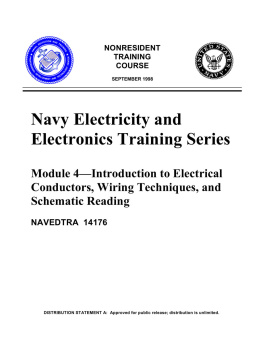
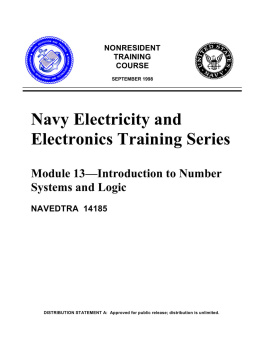
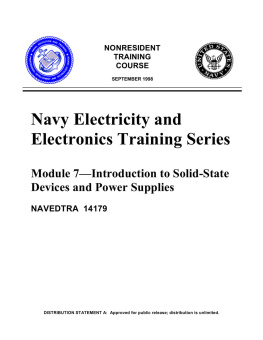
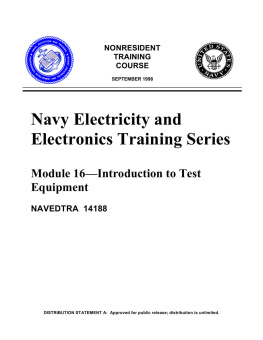

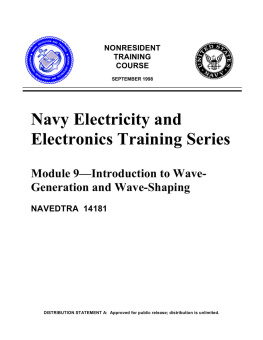

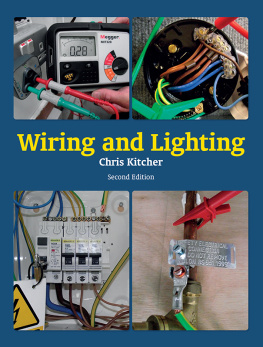

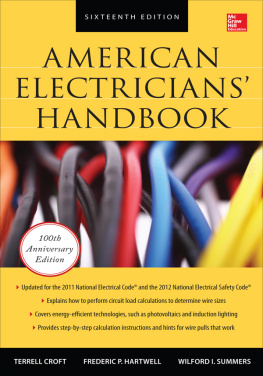
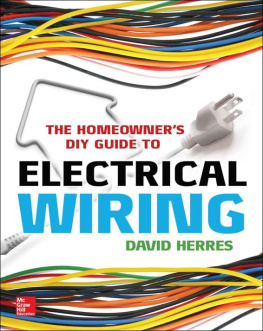
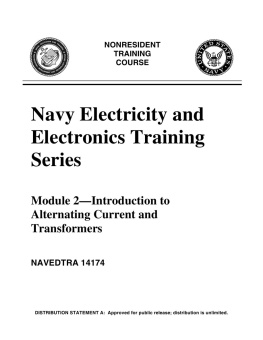
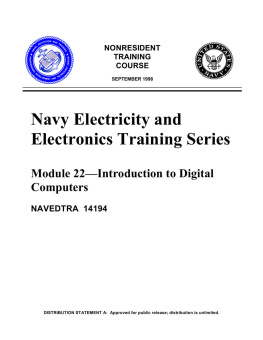

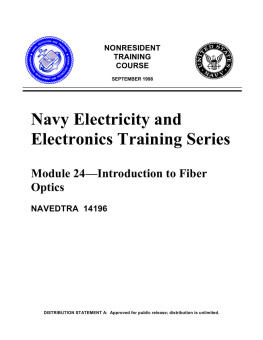
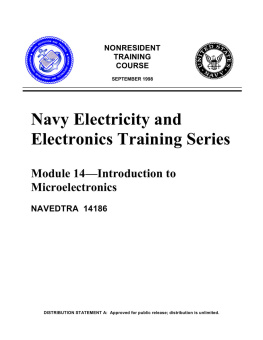
 NONRESIDENTTRAININGCOURSESEPTEMBER 1998Navy Electricity andElectronics Training SeriesModule 4Introduction to ElectricalConductors, Wiring Techniques, andSchematic ReadingNAVEDTRA 14176DISTRIBUTION STATEMENT A: Approved for public release; distribution is unlimited.Although the words he, him, andhis are used sparingly in this course toenhancecommunication,theyarenotintended to be gender driven or to affront ordiscriminate against anyone.DISTRIBUTION STATEMENT A: Approved for public release; distribution is unlimited.PREFACE By enrolling in this self-study course, you have demonstrated a desire to improve yourself and the Navy. Remember, however, this self-study course is only one part of the total Navy training program. Practical experience, schools, selected reading, and your desire to succeed are also necessary to successfully round out a fully meaningful training program. COURSE OVERVIEW: To introduce the student to the subject of Electrical Conductors, Wiring Techniques, and Schematic Reading who needs such a background in accomplishing daily work and/or in preparing for further study. THE COURSE: This self-study course is organized into subject matter areas, each containing learning objectives to help you determine what you should learn along with text and illustrations to help you understand the information. The subject matter reflects day-to-day requirements and experiences of personnel in the rating or skill area.
NONRESIDENTTRAININGCOURSESEPTEMBER 1998Navy Electricity andElectronics Training SeriesModule 4Introduction to ElectricalConductors, Wiring Techniques, andSchematic ReadingNAVEDTRA 14176DISTRIBUTION STATEMENT A: Approved for public release; distribution is unlimited.Although the words he, him, andhis are used sparingly in this course toenhancecommunication,theyarenotintended to be gender driven or to affront ordiscriminate against anyone.DISTRIBUTION STATEMENT A: Approved for public release; distribution is unlimited.PREFACE By enrolling in this self-study course, you have demonstrated a desire to improve yourself and the Navy. Remember, however, this self-study course is only one part of the total Navy training program. Practical experience, schools, selected reading, and your desire to succeed are also necessary to successfully round out a fully meaningful training program. COURSE OVERVIEW: To introduce the student to the subject of Electrical Conductors, Wiring Techniques, and Schematic Reading who needs such a background in accomplishing daily work and/or in preparing for further study. THE COURSE: This self-study course is organized into subject matter areas, each containing learning objectives to help you determine what you should learn along with text and illustrations to help you understand the information. The subject matter reflects day-to-day requirements and experiences of personnel in the rating or skill area.